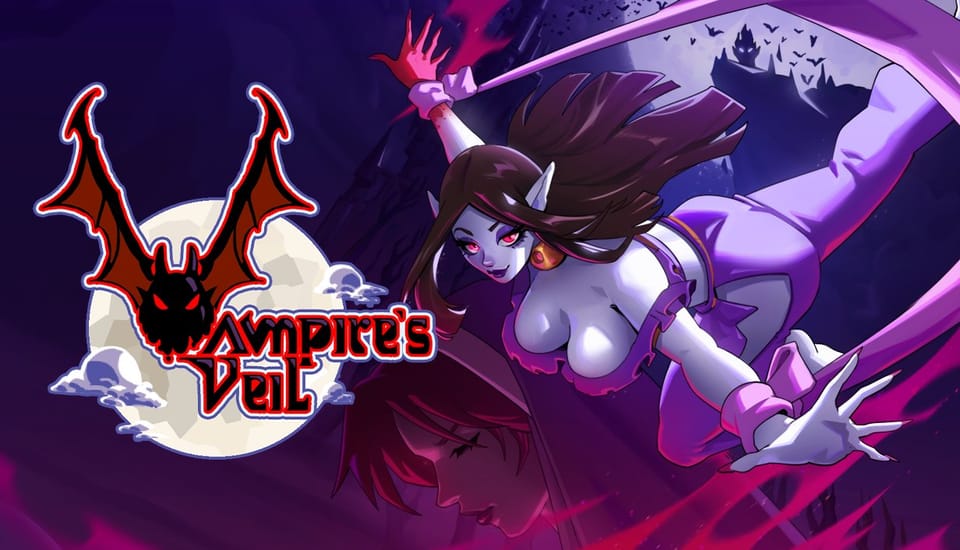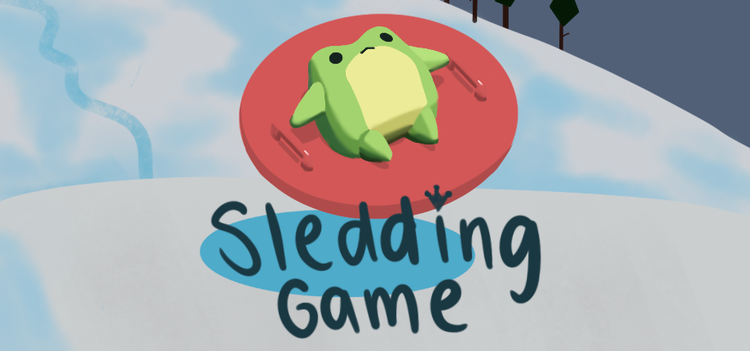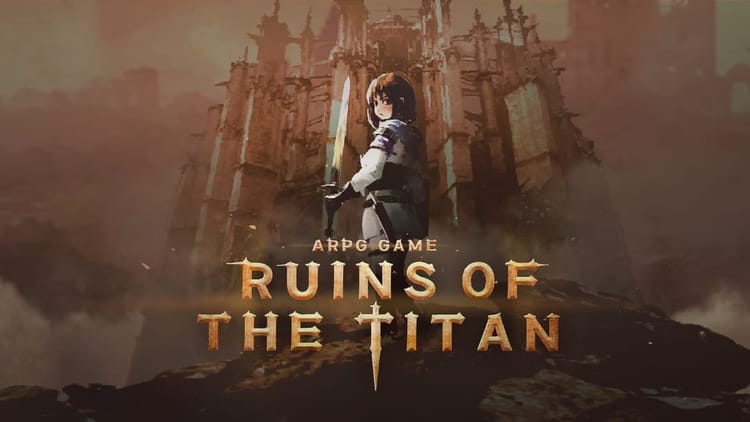Vampire’s Veil: A Metroidvania That Nails the Nostalgia

A Modern Throwback That Actually Feels Right
Metroidvanias that try to mimic Castlevania often stumble into two traps: they either copy too much from the classics, or they lean too heavily into modern Hollow Knight–style design and lose their identity. Vampire’s Veil, from the new indie team at Fairy Game Studio, sits in that rare middle ground where the nostalgia hits, but the game still feels like it’s carving out its own space.
I played through the demo, and it surprised me with its confidence. It knows what it wants to be: a clean, mechanically solid Metroidvania driven by exploration, ability progression, and a morally gray vampiric storyline.

This review breaks down what works, what needs refining, and whether Vampire’s Veil deserves a spot on your radar.
What Is Vampire’s Veil?
A first look at Fairy Game Studio’s debut
You play as Selene, a vampire who has lost her powers and is slowly reclaiming them by fighting through human resistance forces. The narrative is delivered through cutscenes and in-level speech bubbles. It's simple, unobtrusive, and effective for the genre.

The premise is familiar, but the execution feels earnest. The world hints at a layered conflict:
- Are the vampires truly the villains, or
- Are the vampire hunter humans and their allies hiding something?
The demo doesn’t answer that yet, but the setup works. I like how the story is set up already.

Gameplay Impressions
Controls That Feel Instantly Familiar
On a gamepad, the layout mirrors classic action-platformers:
- Movement: D-pad/analog (Up, Down, Left, Right)
- Attack: X
- Jump: A
- Dodge / Dash: RT
- Skill Interaction: Y
- Emblem Ability: B
- Cure: RB
- Switch Fighting Style: LB
- Inventory: Start
- Map: Select

The mapping is intuitive. If you’ve played any modern Metroidvania, your fingers already know where to go.
When you go to the inventory menu, you are free to customize:
- Skill Emblems: you have a choice of using one emblem and one insignia at an instance

- Battle Styles: there will be three battle styles that can be unlocked

- Status: Items here can be equipped to increase your health, mana or ability points

The freedom here is refreshing. You can switch your build on the fly depending on the encounter or exploration challenge in front of you.
Tutorials That Actually Help
The onboarding is surprisingly polished for an indie game. Every ability comes with:
- a short explanation
- a visual illustration of how it works
For instance, the tutorial shows how Vampire’s Bite recovers Selene’s healing bats, simple but effective. No walls of text, no confusing UI.

Exploration & Progression: Ability-Gated, Classic, Satisfying
New abilities are hidden in:
- secret rooms
- hard-to-reach platforms
- optional branching paths
If you enjoy backtracking to unlock areas you couldn’t access earlier, Vampire’s Veil delivers that classic Metroidvania loop. Each new tool, rather than just a combat option, is also a way to open new paths.

Collectibles scattered across maps add extra incentive to explore. And since everything is viewable in your inventory, it avoids the “I found something, but I don’t know what it does” problem many indie Metroidvanias struggle with.

Combat: Simple Start, Satisfying Growth
Combat begins basic but scales naturally as you unlock new powers. Think classic Castlevania hits with a touch of modern responsiveness.

Early enemies fall quickly, but as your kit grows, so does your potential for combos and ultimate attacks.

The game avoids complexity for complexity’s sake. Abilities feel meaningful without overwhelming you.

Coffins act as checkpoint shrines. If you die, you respawn there. No confusion. No penalties that ruin pacing. It’s a system that respects your time.
Walk up → press Y → the coffin becomes your resurrection point.

Press Y and you can suck blood from civilians to restore your bats. It fits the theme, and seeing these civilian NPCs run for their lives looks so funny.

Boss Encounter: Megaman Energy With Modern Flair
The demo boss, a human mage, immediately stood out. Her attacks were readable but punishing until I learned the patterns:
- Fireball volleys
- Ground AOE staff slams
- A predictable rhythm but demanding precision

It took a few tries, but in a good way. Every failed attempt teaches you something. There were two stages for the current boss.
- In the first stage, she was doing melee attacks, so I had to quickly get in to attack and get out before she hit me.
- In the second stage, she was throwing fireballs. I had to dodge the ranged attacks, but could also throw some ranged attacks of my own too

The encounter felt closer to a Megaman-style duel than a typical Metroidvania sponge fight, which I appreciated.
Where It Needs Improvement
To be transparent, the biggest pacing flaw is how the demo starts.
You begin as a fully powered-up Selene for quite a long stretch. Only later do you shift into the “lost your powers” phase.
This undermines the natural Metroidvania progression arc.
Starting at zero sooner would:
- make upgrades feel more meaningful
- reinforce the "reclaiming your power" narrative
- create a cleaner difficulty curve
It’s not a deal-breaker, but tightening this would significantly improve the first impression for new players.
Final Verdict: Is Vampire’s Veil Worth Keeping an Eye On?
If you crave a Castlevania-style Metroidvania and want something that respects the classics without falling into shallow imitation, Vampire’s Veil is absolutely worth watching.
Indie Metroidvanias are everywhere now, but few execute the fundamentals this confidently. Fairy Game Studio seems to understand the heart of the genre: simple tools, tight combat, and worlds that reward curiosity. It hits the nostalgic notes without feeling like a clone. The controls feel right, the exploration loop clicks, and the boss design shows genuine craft.
✅ Nails the Castlevania nostalgia without copying it.
✅ Combat is clean, readable, and satisfying.
✅ The lore shows promise.
❌ Pacing of the game feels off at the start.
If you're a fan of Metroidvania games, this is one to add to your wishlist.





Comments ()